Botanical Medicines: The desk reference for Major Herbal Supplements (second edition)
Mckenna DJ, Jones K, Hughes K, with Humphrey S. Hawthorne
Herbal Press. 2002. 1096 pages
I have always loved books such as this one. Jam-packed with information about the world, in this case herbal supplements, where each page contains fascinating items of interest. This reference tells us about various medicinal herbs, arranged in alphabetical order, starting with a scientific classification and nomenclature, followed by a general description of the plant, and a section on traditional uses and history. This is the stuff that even the interested amateur can read with pleasure while learning a great deal about the plant life that surrounds us. I was delighted, for example, that milk thistle has been used to increase milk supply and that the white veins and white blotches on the leaf were thought, in the middle ages, to have resulted from a drop of the Virgin Mary’s milk falling on the leaf while she was nursing the infant Jesus.
These sections are then followed by a more scientific discussion, including the chemistry of the plant, and its therapeutic uses for various symptoms and medical problems, with discussion as well of the safety profile and side effects of the herb. No claim is made for any use without support from science, and when there is no support in the scientific literature, this information is conveyed in the discussion. This is important since many herbal supplements are used for indications for which there is no scientific rationale and it behoves us to be wary of using any medication, herbal or otherwise, without scientific support. Of course, it is true that the fact that there have not been studies done does not invalidate the possibility that the herb might, in fact, have a positive therapeutic effect on a particular bodily system.
The introductory section on the interpretation of the information for pregnant women and breastfeeding mothers is a good addition to the book, apparently not present in the first edition. There is often a great resistance to using herbs and medications during pregnancy and lactation for fear of what side effects may occur in the foetus or nursling. This is prudent, but sometimes pregnant women and nursing mothers need treatment, and to deny them needed treatment because of a worry about side effects in the foetus or nursling is bad medicine, if the effect to the foetus or nursling can be minimized. Particularly during lactation, the concern about the baby getting medication is overstated, since very little of any medication gets into the milk and almost all drugs and herbal supplements, with few exceptions are compatible with continued breastfeeding.
I have a couple of quibbles. Being particularly interested in lactation, I was disappointed that there was no discussion of fenugreek, blessed thistle, fennel or raspberry leaf, just a few of the herbal supplements that have been used as galactogogues (drugs to increase milk supply). I realize that to include every plant that has been used as a medicine would result in an encyclopaedia, rather than an already large tome. I also would liked to have seen a more detailed drawings of the plants than are present, though I realize too that the purpose of the book is not field identification. Still, it would have been nice to walk in the woods and find a plant, and be able to say, after looking in the book, “Ah, that’s evening primrose”. Finally, a section classifying herbal supplements according to their therapeutic uses, say “Herbs which have been used to increase milk supply”, “Herbs used with liver problems” would make the practitioner’s work much easier.
But these are quibbles, and I would recommend this book to any medical practitioner, even the “non-believer” in herbal medicines, maybe especially the “non-believer”. Even the non-believing health professional will have patients taking herbal supplements, and it would be useful for him/her to know what effects these herbs may have on the patients health. In fact, I think that any home would profit by having this book on its bookshelf.
Jack Newman, MD, FRCPC
Toronto, Ontario
